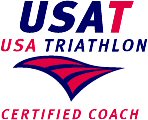Finding the Best Yoga Class for You
Gyms, fitness studios, health clubs and wellness centers around the world are adding yoga classes to their schedules, but how do you find the right class for you? Yoga styles today range from very gentle and meditative to vigorous and technically demanding, says Mara Carrico, the San Diego, California, based author of Yoga Journal's Yoga Basics--The Essential Beginner's Guide to Yoga for a Lifetime of Health and Fitness. Selecting a class that fits your goals, physical condition and fitness level is very important. Carrico offers these 10 tips for finding a safe, effective yoga class to include in your workout:
1. Determine Your Goals. Potential health and fitness benefits of yoga include strength, flexibility, balance and improved breathing and posture. However, yoga is also an internally focused exercise that may help you calm your mind and increase your concentration skills. You may want to explore yoga as a philosophy, meditative practice or spiritual discipline. Understanding your objectives and level of interest will help you find the right program.
2. Consider the Different Types of Yoga Available. The physical component of yoga--called hatha yoga--consists of poses and breathing techniques that prepare the body for stillness, creating physical strength and stamina, while allowing the mind to remain calm. There are numerous styles of hatha yoga. For example, Ashtanga (power) yoga is very vigorous, with moves and postures similar to acrobatics; this style is not recommended for beginners. Iyengar is a detailed, technically demanding style of yoga that challenges participants to perform postures with great precision. Viniyoga, Kripalu and Ananda yoga are less detailed in technique and more suited to novices looking for stretching and relaxation.
3. Consider How and Where You Want to Take Yoga. If your goals are primarily fitness related, you may want to take yoga at a fitness facility. For more in-depth training from master teachers, look for an ashram, an academy or a studio that is dedicated entirely to yoga. If you prefer individualized attention, you may want to study with a yoga coach or yoga-trained personal trainer.

4. Consider Your Physical Limitations. Always check with your doctor before beginning a new fitness program. Most educated, experienced yoga instructors are sensitive to their students physical limitations and knowledgeable of the contraindications that might be applicable. However, you also need to recognize that your physical condition should influence the type of yoga you choose to practice. For example, if you have sciatica, you should avoid forward bends and intense hamstring stretches. If you are pregnant or have high blood pressure, ear congestion or eye problems, you should avoid holding your breath or doing inverted poses, such as shoulder stands and headstands. Problems with your neck, shoulders, wrists, knees, back, feet or ankles may also require modified techniques. Fully inform your instructor of any physical problems you have.
5. Find Out About Your Instructor's Experience and Credentials. Ask your instructor about his or her yoga training and teaching experience. Many different certifications are available. Your teachers education and experience should demonstrate a commitment to safety, professionalism and ongoing education.

6. Ask Lots of Questions in Advance. Before beginning a class, ask the instructor if it is appropriate for you and will help you meet your specific goals.
7. Listen to Your Body. During class, do not force or strain, and remember to breathe. Do not attempt poses that feel uncomfortable or painful.
8. Discuss Your Experience With Your Instructor. Inform your instructor if certain postures or exercises are problematic for you. He or she should be able to offer an explanation and suitable modifications.
9. Try a Variety of Classes. Don't be reluctant to admit that a certain style of yoga or yoga instruction is not for you. Try as many classes and instructors as necessary.
10. Be Patient With Your Progress. Mastering yoga takes time. Don't be discouraged if you do not learn as quickly as you would like. The more you practice, the more you will realize the many benefits of this discipline.
Article courtesy of IDEA Health & Fitness Association. Reprinted with permission.
Personal Training and Fitness Articles |
Wellness and Fitness Handouts
Nutrition Articles and Handouts








